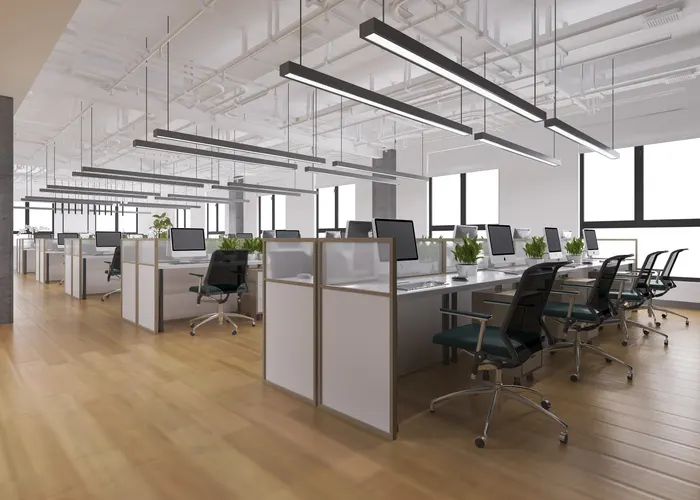What Does Your Building Say About Your Organisation
Of course, when your business is in its fledgeling stages, you may not be in a position to roll out the red carpet and usher guests across the marble floor of your building's entrance hall. But, regardless of the size and cosmetic features of your commercial property, where you conduct your business will leave a lasting impression on clients and prospective talent that you may be looking to hire.
Resource frugality and waste reduction are admirable and socially responsible efforts. However, leaving your assets in a neglected state or expecting your employees to perform at their peak in unsuitable conditions that do not support or meet the expectations of the modern labour market may not only sabotage your competitiveness, but your reputation may suffer also.
From a customer perspective
Everything, from the way that your building impacts your city's skyline to the signage and branding on the outside, will leave an impression on passersby and clients alike. Buildings often become landmarks or points of reference for locals, and, depending on how your building looks, it may become infamous for all the wrong reasons.
Your building can send the following messages to your customers:
- This is/isn't a professional establishment.
- Give reassurance that this is/isn't a safe place to do business.
- This is/isn't a welcoming space.
- This establishment is/isn't able to meet contemporary market standards.
Hygiene is another highly relevant factor to take into account. Everything from the visible surfaces to the state of your WC will prompt customers to decide whether or not to purchase from you.
According to studies, 87% of consumers have a more positive perception of a business that demonstrates initiative towards resolving social and environmental issues.
Here are a few examples of how you can show customers that you address environmental concerns:
- Have clearly labelled recycle bins around your premises.
- Reduce your carbon footprint by conserving energy throughout your building. This can be achieved by utilising technology that automates lighting and heating control through the use of occupancy detectors.
- Donate money or resources to sustainability initiatives.
- Use recyclable or reusable materials; for example, if you are redecorating your office space, it may be an option to upcycle office furniture or repurpose items that would have otherwise been headed for landfills.
From an employee perspective
Depending on the nature of your business, your employees may be expected to spend the majority of their working days on your premises. The modern worker is often very conscientious of how their immediate environment will impact their physical as well as mental wellbeing.
Statistically, larger working places are shown to have higher rates of employees suffering from work-related mental illnesses. This begs the question of whether environmental factors have a role in inducing stress. Traditionally, architecture has prioritised aesthetics; however, modern designers are placing increasing emphasis on functionality and user behaviour within the building. The layout of your office space could be affecting how your employees socialise – this presents a problem for the increasingly collaborative nature of modern job roles. Furthermore, inconsistent heating or insufficient lighting will impact mood and wellbeing for employees as they cannot be expected to perform tasks in uncomfortable or restricting environments.
New, as well as existing employees, will undoubtedly be affected by the functionality of your building and office space, from how you manage waste, to where you store essential resources and supplies. All of these elements influence their perception of the level of concern that business owners have towards the health and wellbeing of their labour force. In addition, like customers, employees are also increasingly environmentally conscientious and may not wish to work for an organisation that does not make efforts to improve sustainability.
It's essential to take a progressive look into the future of business and how the concerns and perceptions of internal and external stakeholders will affect your organisation's survival. Your building is a tangible embodiment of your business's core values; it is, therefore, essential that you optimise its functionality to suit the needs of both customers and employees. Ultimately, your efforts towards more sustainable business practices and a healthier physical environment will result in a positive public image for your organisation.
Occupancy analytics will enable you to understand how your building is being used. This data will empower you to make fact-based decisions on how you can provide and enable environments that are satisfying for end-users and engage them to utilise your commercial space more effectively. Visit our website to learn more about True Occupancy today.
Alternately, download The Truth About Workplace Occupancy guide here.
Share this
You May Also Like
These Related Posts

Is Your Commercial Building Fit For Purpose?

How To Calculate And Optimize Your Office Space Utilization Rate

How Workplace Occupancy Sensors Improve Employees’ Experience
Connect with us
Need more information? Ready to get started? We're here to help, get in touch.


